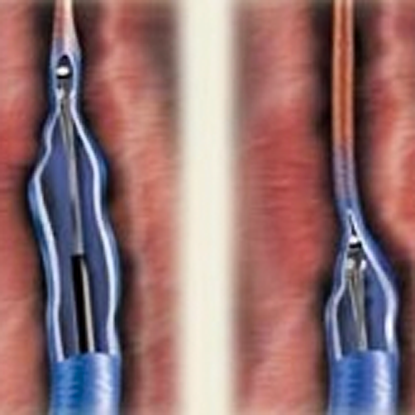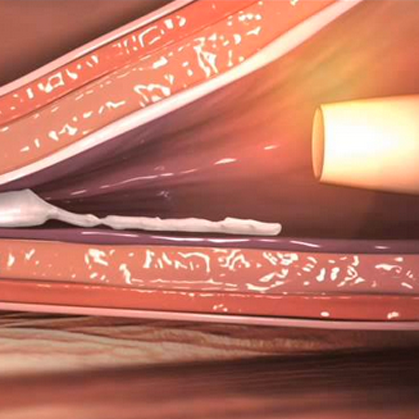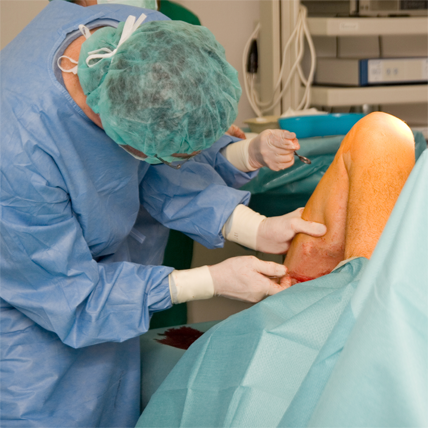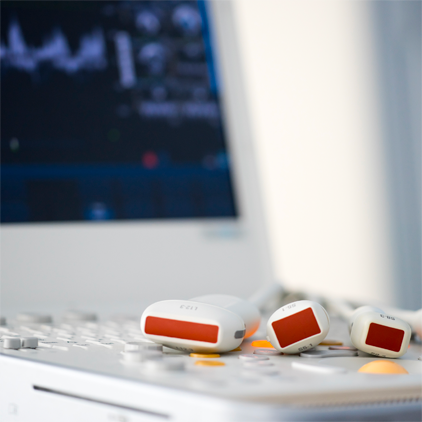
Simply Vein Treatments & Procedures

ClosureFast™ Radiofrequency Ablation
The ClosureFast™ procedure is a minimally invasive treatment that uses radiofrequency (RF) energy (uniform heat) to effectively treat patients with varicose veins or chronic venous insufficiency (CVI), a serious condition that often manifests as varicose veins.
With CVI and varicose veins, the valves in the leg veins that direct blood from the legs back toward the heart no longer function properly, causing blood to pool in the legs. And because the valves in the legs cannot be repaired, the only alternative is to re‐route the blood flow from the diseased veins to the healthy veins.
This unique procedure is proven effective in eliminating varicose veins and improving the appearance of the legs, allowing for a short, comfortable recovery and a quick return to everyday activities. While it’s not designed to address spider veins or cosmetic issues, ClosureFast™ procedure has been effectively used to treat both women and men across a wide range of ages.

VenaSeal™ Closure System
The VenaSeal™ closure system is a new and innovative treatment that improves blood flow by closing the diseased vein. It treats symptomatic venous reflux disease in the lower extremity superficial venous system, often the underlying cause of painful varicose veins.
VenaSeal™ has produced effective results with patients and they often have minimal to no bruising and can return quickly to normal activities. It’s the only procedure to use an advanced medical adhesive to safely and effectively close the diseased vein. Unlike other heat‐based treatments, the system does not require multiple injections of a dilute local anesthetic, therefore this unique approach eliminates the risk of thermal nerve injury that is sometimes associated with certain thermal‐based procedures.
This procedure should not be used in patients who have a known hypersensitivity to the VenaSeal™ closure system’s adhesive, acute inflammation of the veins due to blood clots, or acute whole‐body infection.

Microphlebectomy
Microphlebectomy (ambulatory phlebectomy) is a minimally invasive outpatient procedure to remove visibly protruding varicose veins.
Performed in our office under local anesthesia, Dr. Olson creates very small incisions in the leg, often less than ¼ inch, for the removal of medium to large size veins. This safe and relatively painless procedure allows blood to be rerouted to nearby healthy veins and generally stitches are not required. There is minimal pain with a microphlebectomy. Patients typically experience better circulation and are able to drive home and return to work within 24 hours.
How does microphlebectomy work?
While there is no required preoperative lab work, an ultrasound may be performed to ensure veins deeper in the leg are working correctly. Dr. Olson first identifies and marks the damaged veins for removal. Next, he injects a local anesthetic into the area surrounding the vein. A 2–3 mm incision is made where he removes the bulging vein with a small tool. The procedure takes between 30 to 60 minutes, depending on the number of veins removed. Stitches are not required and patients may shower 36 hours after surgery.

Sclerotherapy
Sclerotherapy is a minimally invasive and highly effective outpatient procedure known as the “gold standard” for eliminating varicose and spider veins. Patients have described it as relatively painless, therefore not requiring anesthesia and typically experience very few side effects. Some experience minor discomfort that lasts for only a few minutes but can resume normal daily activities immediately. An ultrasound can determine if there are underlying causes that need to be addressed before the procedure begins as well as the number, size and location of veins injected.
Additionally, depending on the degree of the problem, the number of treatments may vary. Prior to the procedure create and bring a list of all medications you are taking, including over‐the‐counter medications and avoid using lotion on your legs.
How does Sclerotherapy work?
During the procedure a small syringe with a fine needle is used to inject a medication called sclerosant directly into the vein. Sclerosant irritates the lining of blood vessels, causing them to swell and collapse. Blood flow is rerouted to healthy neighboring veins as the irritated vein turns into scar tissue and is absorbed into your body. The procedure takes approximately 15 minutes with visible results, although some veins may call for more than a single injection.

Venous Duplex Scanning
A venous duplex scan is a procedure using high-frequency sound waves (Doppler ultrasound) to assess blood flow in arm and leg veins. Patients with symptoms ranging from leg pain/swelling to varicose veins and swollen arms and legs will benefit from this test. The scan combines ultrasound with real-time imaging of veins. A monitor displays the images and can be recorded or printed for further evaluation.
A venous duplex scan can assist in the discovery of restricted blood flow or uncover blood clots formation in your leg. Generally the test is performed as either an upper extremity exam (neck, shoulder, arms and wrists) or a lower extremity exam (legs and ankles).
How does venous duplex scanning work?
The exam takes approximately 20 to 30 minutes, beginning with the patient lying on an exam table. A small amount of gel is applied to the area being tested. Next, a device called a transducer is used to move over the selected area, directing sound waves at veins to record blood flow and capture multiple views of your arteries. You’ll be asked to perform breathing exercises to alter blood flow as images are captured. And the sound you hear in the examination room, it’s your blood moving during the procedure.





